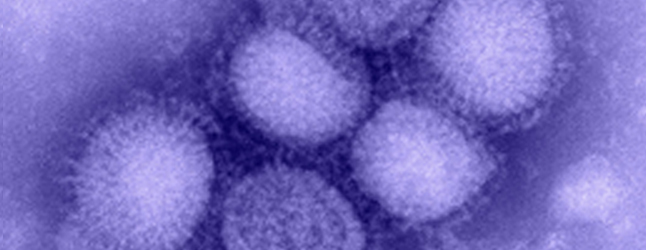
By David F. Rooney
It’s here in BC, quietly jumping from host to host but so far the H1N1 virus, also known as swine flu, hasn’t tripped one of the three triggers set up to detect its widespread presence in the Interior Health Authority region, says Dr. Andrew Larder, IHA’s senior medical health officer.
“It’s certainly here earlier than we expected,” he said in an interview Thursday afternoon. “It’s clearly here much earlier because this virus targets young people.”
And the young people it targets first are back at school now.
Larder said the flu season typically begins towards the end of December, but the first cases of the second wave of swine flu have already started appearing in British Columbia, primarily in the Lower Mainland and on Vancouver Island.
There is no cause for alarm.
Larder said H1N1 will cause some deaths but “you’re right — this is not 1918 revisited.”
1918 was the year that the Spanish Flu because a world-wide pandemic that, according to some estimates, claimed 20 million lives, as many as died in the First World War. Some people will die as a result of H1N1, but people die from the run-of-the-mill flu strains that sweep through Canada every winter. What this won’t be is a mass killer like the Spanish Flu.
Swine flu outbreaks will be treated as locally as possible, Larder said, adding that IHA is not tracking individual cases.
“We’re tracking populations, now,” he said.
Watching the virus’ progression from town to town to city to village now makes more sense to public health officials like Larder than trying to track its leaps through the citizenry of single population centre. Consequently, the province has begun tracking the pandemic by watching physicians’ billings for influenza treatment, spotting admissions to BC hospitals of patients reporting respiratory illnesses and capturing reports from school districts on student absentee rates of 10 per cent of more.
“The province is seeing an increase in reported cases of H1N1 but we haven’t seen it in Interior Health, yet,” Larder said.
When it eventually is reported in Revelstoke you’ll like recognize its symptoms as — no surprise — they are very similar to the symptoms of the regular flu. They include fever, cough, a sore throat, head and body aches, chills, fatigue and occasionally vomiting and diarrhea. In extreme cases, patients may have trouble breathing.
Parents of children they suspect may have H1N1 are being encouraged — unless they need medical attention — to keep them at home.
“Do not send them to school or daycare until they are feeling better and able to fully participate in normal activities,” says a statement from the provincial Ministry of Health.
Based on the experience of Australia and other Southern Hemisphere countries which have just experienced the second wave of the H1N1 pandemic, public health officials in B.C. do not anticipate that closures of individual schools, community-wide closures, or province-wide closures will help control the transmission and impact of swine flu.
But if you do think your child really needs to see a doctor be sure to call ahead and report your child’s symptoms. You can find out more by going to www.gov.bc.ca/h1n1/keyfacts/index.html.



